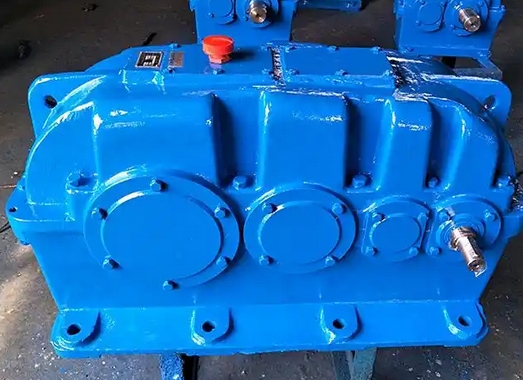What other factors besides quenching temperature and holding time can affect the hardness of ZLY140-20-2 reducer gears
In addition to quenching temperature and holding time, the following factors also affect the hardness of ZLY140-20-2 reducer gears:
Gear materials: The basic hardness of gears varies among different materials. Common gear materials include high-strength alloy steel, cast steel, cast iron, etc. Among them, high-strength alloy steel has excellent mechanical and wear resistance properties and can achieve high hardness through heat treatment. In addition, the carbon content of the material and the type and content of alloying elements can also affect hardness. For example, high carbon steel can achieve higher hardness through quenching treatment, while some alloying elements such as chromium, nickel, molybdenum, etc. can improve the hardenability and hardness of the steel.
heat treatment process

Quenching medium: The cooling capacity of quenching medium has a significant impact on the hardness of gears. If the workpiece that should be cooled with quenching oil is quenched with water, the gear may deform or even crack due to excessive cooling speed; If oil cooling is used for workpieces that should be quenched with water or salt bath, the cooling capacity may be insufficient, the cooling rate may be too slow, and the martensitic structure may not be obtained, resulting in lower hardness of the workpiece.
Tempering process: If the tempering temperature is too high or the holding time is too long, it will reduce the hardness of the gear. For example, carburizing gears with excessive residual austenite after tempering at 650-670 ℃ for more than 3 hours will cause some carbides to precipitate, reduce the stability of austenite during reheating quenching, promote the transformation of austenite to martensite, and thus reduce hardness.
Carburizing process: Low concentration of carburizing agent can lead to low surface carbon concentration and insufficient hardness of gears after carburizing and quenching. In addition, gas leakage or excessive carbon black in the furnace during the carburizing process, as well as oxidation and decarburization during secondary quenching and heating, can all affect the hardness of the gear.
Processing Technology
Grinding process: The grinding pressure, speed, and use of grinding fluid during the grinding process can all affect the hardness of the tooth surface. For example, excessive grinding pressure and speed may cause overheating of the tooth surface, leading to a decrease in hardness.
Processing accuracy: Processing accuracy indicators such as tooth profile error and surface roughness can affect the hardness distribution and actual performance of gears. The tooth profile error of the grinding process is small, and the load distribution during meshing is uniform, which can avoid hardness changes caused by local overload. Gears with low surface roughness have strong lubricating oil film retention ability, which can reduce the risk of tooth surface adhesion and maintain the stability of gear hardness.
Working environment: The hardness requirements of gears will also vary in different working environments. In harsh environments such as high temperature and high pressure, gears need to have higher hardness to withstand the effects of these conditions. Otherwise, if they are exposed to such environments for a long time, the hardness of gears may decrease due to material softening and other reasons.
Furnace loading: Excessive furnace loading of gears can lead to low carbon potential during carburizing, reduced cooling rate during quenching, and thus affect the hardness of gears, resulting in insufficient and uneven surface hardness of gears.

